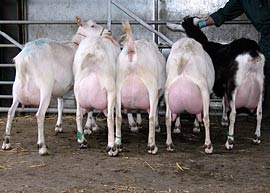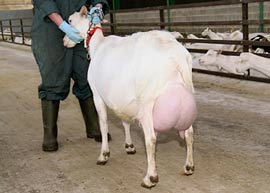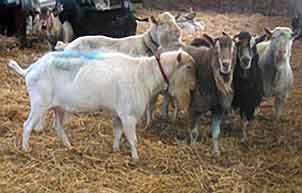Sound breeding policies are central to the success of any goat enterprise.
Goats of good conformation will be productive over a long lifetime, resulting in lower replacement costs.
It is of course essential to monitor the performance of individuals within any herd and ensure that only the best females are chosen to keep female offspring from as herd replacements.
High quality male goats should be used as part of a breeding programme and these are typically sourced from high quality pedigree herds that can provide several generations of milk recording data and show results as an indicator of conformation and consistency.
Pedigree breeders, some of whom have supplied commercial herds are listed here. Herd improvements take place by keeping records of milking daughters and recognising valuable sires (i.e. progeny testing of promising males) – then using proven males extensively. Typically- twin males- one great, one mediocre have been identified in this way.
Some herds choose to mate their lower producing dairy females to a meat breed of goat, such as the Boer, to produce kids that can be reared for meat rather than for dairy replacements.
Artificial insemination is possible in goats, but is labour intensive for the large numbers of goats involved. It may be possible to inseminate a small group of the very best dairy females on a farm with some semen bought in from outstanding dairy males to improve the standard of the herd.
British Goat Society

patron: HRH Princess Alexandra
established 1879
tel: 01322 611767
email: [email protected]


